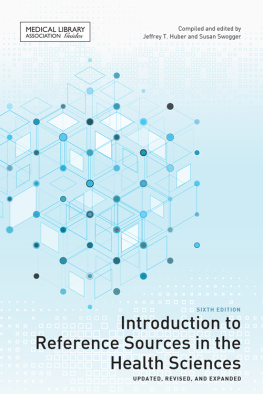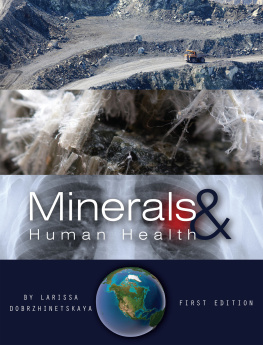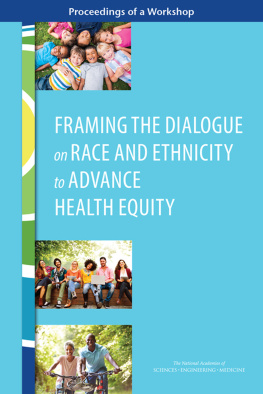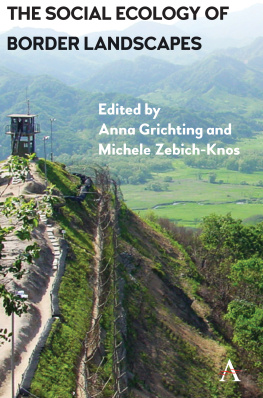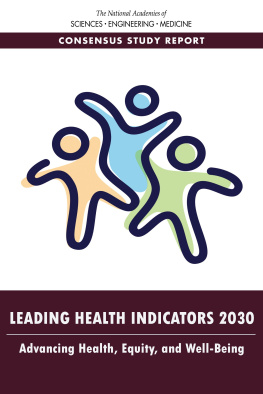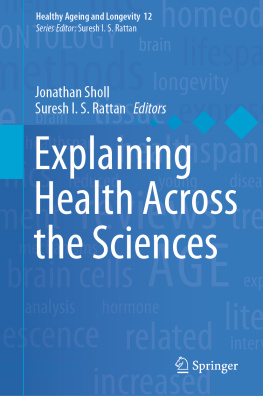Biodiversity and Health
Linking Life, Ecosystems and Societies
Serge Morand
Claire Lajaunie
Series Editor
Franoise Gaill


Copyright
First published 2018 in Great Britain and the United States by ISTE Press Ltd and Elsevier Ltd
Apart from any fair dealing for the purposes of research or private study, or criticism or review, as permitted under the Copyright, Designs and Patents Act 1988, this publication may only be reproduced, stored or transmitted, in any form or by any means, with the prior permission in writing of the publishers, or in the case of reprographic reproduction in accordance with the terms and licenses issued by the CLA. Enquiries concerning reproduction outside these terms should be sent to the publishers at the undermentioned address:
ISTE Press Ltd
27-37 St George's Road
London SW19 4EU
UK
www.iste.co.uk
Elsevier Ltd
The Boulevard, Langford Lane
Kidlington, Oxford, OX5 1GB
UK
www.elsevier.com
Notices
Knowledge and best practice in this field are constantly changing. As new research and experience broaden our understanding, changes in research methods, professional practices, or medical treatment may become necessary.
Practitioners and researchers must always rely on their own experience and knowledge in evaluating and using any information, methods, compounds, or experiments described herein. In using such information or methods they should be mindful of their own safety and the safety of others, including parties for whom they have a professional responsibility.
To the fullest extent of the law, neither the Publisher nor the authors, contributors, or editors, assume any liability for any injury and/or damage to persons or property as a matter of products liability, negligence or otherwise, or from any use or operation of any methods, products, instructions, or ideas contained in the material herein.
For information on all our publications visit our website at http://store.elsevier.com/
ISTE Press Ltd 2018
The rights of Serge Morand and Claire Lajaunie to be identified as the authors of this work have been asserted by them in accordance with the Copyright, Designs and Patents Act 1988.
British Library Cataloguing-in-Publication Data
A CIP record for this book is available from the British Library
Library of Congress Cataloging in Publication Data
A catalog record for this book is available from the Library of Congress
ISBN 978-1-78548-115-4
Printed and bound in the UK and US
Foreword
Global population growth, industrialization and geopolitical problems accelerate global changes and are in turn leading to a significant erosion of biodiversity, significant degradation of ecosystems and large migratory movements, both by human and animal populations.
Due to an increased rate of globalization and various global changes, we are now facing an increase in the spread of infectious agents, rising risks of pandemics and increased incidence of many chronic non-infectious diseases. These changes highlight the globalization of health risks, as well as the importance of the human-animal-ecosystem interface in the evolution and emergence of pathogens as well as in the determinism of chronic diseases. These health crises outline the interdependence between human, animal and ecosystem health.
The One World-One Health concept emerged in 2004 during a conference of the Wildlife Conservation Society. The concept aims to combine biodiversity conservation with public health objectives by making the connection between the emergence of infectious diseases stemming from wildlife and damage to biodiversity. This new concept allows for an interdisciplinary approach towards health problems by bringing together ecologists, physicians, anthropologists, biologists, demographers, among others, in order to address the etiology and prevention of chronic non-communicable diseases and infectious diseases in an essential and innovative way.
This book demonstrates the diversity of these scientific approaches at the heart of the relationship between biodiversity and health, by first exploring the major trends in the spread of infectious diseases and its links with animal biological diversity and human cultural diversity. In this way, it is essential to have knowledge of the ecosystem dynamics which drive the processes, leading to the appearance or resurgence of infectious agents, their transmission, and their extinction in the natural world, as this knowledge in turn leads to an understanding of infectious risks. In the second stage of the approach, the causes and mechanisms, which explain this animal biological diversity, as well as human biological and cultural diversity, are to be found in human evolution and history, from the first case of human migration out of Africa, to the emergence of agrarian civilizations and the first cases of globalization.
It is now known that in most cases, the total eradication of infectious diseases is impossible since there is a permanent coevolution between the resistance of disease vectors and the fight against them. From this particular observation, evolutionary medicine, otherwise known as Darwinian medicine, came to fruition. This approach aims to understand the ecological and evolutionary principles at the origin of many diseases in order to improve treatment and prevention. The hypotheses derived from evolutionary theory demonstrate, for example, the importance of preventing or slowing down the evolution of resistance or the appearance of unintended effects. Theory, modeling and empirical experiments are therefore crucial for classical management methods and new fine manipulation methods in the fight against diseases.
These transdisciplinary approaches to biodiversity, well-being and health also highlight other important aspects: the importance of scientific expertise, but also the importance of ethical and legal, governance and economic issues.
Beyond this fundamental knowledge, the biodiversity/health approach provides scientists with an extremely valuable source of inspiration. We can take the example of the re-appropriation of biocultural knowledge embodied in traditional pharmacopoeia, knowing that the loss of biodiversity results in the loss of chemodiversity in secondary metabolites essential for interactions among plants, animals and humans, such as metabolites with anti-parasitic and anti-microbial properties. On the subject of ecosystem services rendered by nature, this knowledge allows us to create a link between biodiversity and human well-being. In a more innovative way, new technologies such as CRISPR/Cas system gene editing and manipulation should be able to help us in the fight against certain vectors, including malaria for example, but it will be necessary to have a better understanding of the mechanisms and target specificity, their consequences at the population level and the adaptive mechanisms that could lead to unintended consequences.
This book provides an in-depth and fascinating discussion of the many aspects of the close relationship between biodiversity, health and human well-being.
Martine Hossaert, Institute of Ecology and Environment, CNRS



